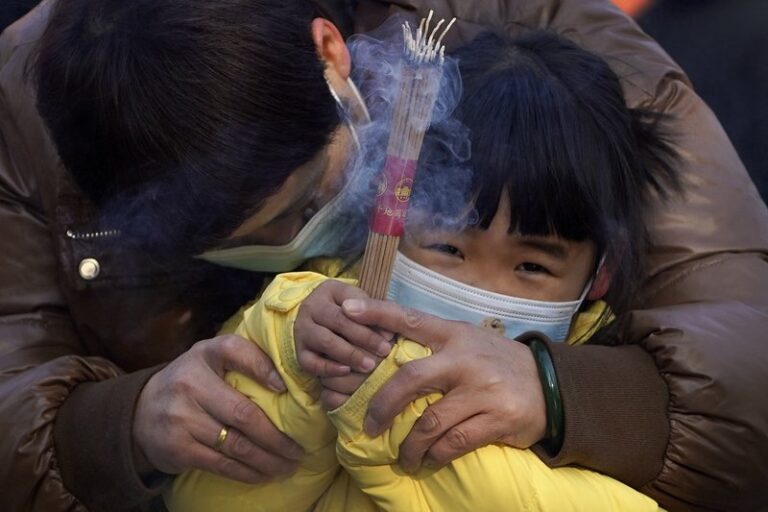
(AP) — Australia’s leading medical group says the New South Wales state government has put the rest of the country at risk by its decision not to go “hard and early” in its response to the COVID-19 outbreak on Sydney’s northern beaches, which is suspected to have also caused new cases in neighboring Victoria state.
On Saturday, Victoria recorded 10 new local cases, bringing active cases in the state to 29. Trace testing has linked the new Melbourne coronavirus cluster to the New South Wales outbreak.
Australian Medical Association Vice President Chris Moy said the New South Wales government was “playing the odds” by relying heavily on its contact tracing system instead of imposing a quick lockdown to stop the spread across Sydney.
“They have put themselves and put the rest of the country at risk,” Moy told Fairfax Media. “I can completely understand why Victoria has reacted (by) closing the border very quickly, because they are very worried about this.”
Victoria only recently overcame a second wave, which forced overnight curfews, lockdowns of Melbourne and other areas and which killed more than 800 people out of Australia’s death toll of 909. The state had gone more than two months without a new case until the new outbreaks over the past week.
New South Wales Premier Gladys Berejiklian has resisted pressure to force Sydney into lockdown, mandate masks and ban crowds at some sporting events despite the number of cases in her state growing from none to 170 in two weeks.
University of Melbourne epidemiologist Tony Blakely said the New South Wales government should have locked down the northern beaches outbreak 48 to 72 hours earlier than they did.
“They were slow,” he said, adding that he was also among many experts in Australia scratching their heads over why the state was unwilling to mandate masks.
On Saturday, Berejiklian relented somewhat on the mask policy. From midnight on Saturday, masks will be mandatory in shopping centers, on public transport, in entertainment venues such as a cinema, and fines will come into effect on Monday.
In December, many states opened their borders freely to other states, and the hope was to have Australia completely open by Christmas, except for international travelers. But the Sydney northern beaches outbreak has new restrictions in place.
The newest occurred at midnight Friday when Victoria closed its border to New South Wales, prompting traffic bottlenecks as people raced to beat the closure. Once in Victoria, COVID-19 testing sites saw long queues as travelers lined up for mandatory testing. Anyone who was not able to return by that deadline faced 14-day quarantines.
Elsewhere in the Asia-Pacific region:
— South Korea will extend stringent distancing rules for two more weeks to suppress a viral resurgence, as it confirmed its first cases of an apparently more contagious variant of COVID-19 detected in South Africa. Health Minister Kwon Deok-cheol said Saturday the second highest level of distancing rules, called “Tier-2.5,” will remain in place in the greater Seoul region until Jan. 17. He says the third highest level of restrictions will be maintained in other areas until then. South Korea reported 824 new cases, raising the national tally to 62,593 with 942 deaths. It’s the first time for the country’s daily tally has fallen below 800 since Dec. 28. The Seoul area has been at the center of the outbreak, accounting for about 70% of the cases. Kwon says the government won’t enforce the toughest restrictions in the Seoul area because the country’s daily tally is currently hovering around 1,000 without further surges. He says worries about the economy were also considered. The nationwide curbs include banning social gatherings of more than five people and in-person religious services. South Korea also said the first confirmed case of the South African coronavirus variant was found in a person who arrived on Dec. 26 from the country. Four additional cases of a U.K. variant also believed to be more contagious were reported Saturday, taking the total to nine. The government plans to require all foreigners entering South Korea to submit negative COVID-19 test results, staring Jan. 8.
— The northeastern Chinese city of Shenyang is testing millions of residents following a small but persistent growth in cases. The city in Liaoning province just north of the capital confirmed seven new cases of COVID-19 on the first day of the year while another case was reported in Beijing. Emergency testing is already underway for more than a million people following the detection of a small cluster in Beijing’s northeastern suburbs. Wary of another wave of infections, China is urging tens of millions of migrant workers to stay put during next month’s Lunar New Year holiday, usually the world’s largest annual human migration. China on Saturday reported a total of 22 cases, including 14 that were brought from outside the country. China has reported a total of 87,093 cases and 4,634 deaths, although some question whether those figures underreport the full extent of the outbreak.






